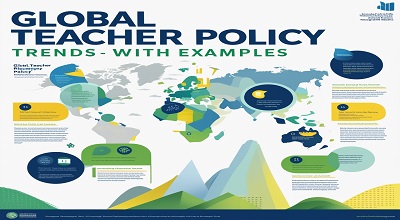Global Teacher Policy Trends
Global Teacher Policy Trends: Teachers play a pivotal role in shaping the future of education. As global education systems evolve, so do the policies that govern teacher recruitment, training, retention, and professional development. Understanding the latest trends in teacher policy helps educators, policymakers, and stakeholders adapt to changing demands.
This website post explores the most recent global teacher policy trends, supported by real-world examples from different countries. We will also discuss challenges, future directions, and key takeaways for improving teacher policies worldwide.
Understanding Teacher Policy
Definition and Importance
Teacher policy refers to the regulations, frameworks, and strategies that govern the teaching profession. It includes:
- Teacher recruitment and qualifications
- Salaries and working conditions
- Professional development opportunities
- Evaluation and accountability mechanisms
Strong teacher policies ensure quality education, improve student outcomes, and enhance teacher motivation.
Key Components of Teacher Policy
- Recruitment & Qualifications – Setting standards for hiring qualified teachers.
- Training & Certification – Ensuring teachers receive proper pre-service and in-service training.
- Compensation & Benefits – Competitive salaries and incentives to retain talent.
- Work Environment – Safe, supportive, and resource-equipped schools.
- Professional Growth – Continuous learning opportunities for career advancement.
Global Teacher Policy Trends
1: Digital Transformation in Teacher Education
With the rise of EdTech, many countries are integrating digital tools into teacher training. Examples:
- South Korea: AI-powered teaching assistants help educators personalize learning.
- Estonia: Mandatory digital competency training for all teachers.
2: Teacher Well-being and Mental Health Support
Burnout and stress among teachers have led to policies promoting mental health. Examples:
- Australia: Nationwide well-being programs for educators.
- UK: Counseling services and workload reduction initiatives.
3: Equity and Inclusion in Teacher Recruitment
Efforts to diversify the teaching workforce are growing. Examples:
- Canada: Targeted recruitment of Indigenous teachers.
- South Africa: Policies to increase male teachers in early childhood education.
4: Performance-Based Incentives and Accountability
Governments are linking teacher pay to performance metrics. Examples:
- Chile: Bonus systems for high-performing teachers.
- China: Evaluations based on student outcomes and peer reviews.
5: Continuous Professional Development (CPD)
Lifelong learning is now a policy priority. Examples:
- Finland: Teachers must complete 3+ days of CPD annually.
- Singapore: Career-long professional development pathways.
Case Studies: Teacher Policies in Different Countries
Finland: Trust-Based Teacher Autonomy
Finland’s teachers have high autonomy, with minimal standardized testing. Their success is attributed to:
- Rigorous teacher education (Master’s degree required).
- High societal respect for the profession.
Singapore: Rigorous Teacher Training and Career Pathways
Singapore’s “Teach Less, Learn More” policy focuses on:
- Selective teacher recruitment from top graduates.
- Structured career progression with multiple specialization tracks.
Kenya: Digital Learning and Teacher Upskilling
Kenya’s Digital Literacy Program trains teachers in:
- Integrating tablets and e-learning in classrooms.
- Government partnerships with EdTech firms.
USA: Addressing Teacher Shortages and Diversity
The U.S. faces a teacher shortage, leading to policies like:
- Loan forgiveness for teachers in high-need areas.
- Alternative certification programs to fast-track hiring.
India: National Education Policy (NEP) 2020 Reforms
India’s NEP 2020 introduces:
- 4-year integrated B.Ed. programs for teachers.
- Mandatory teacher training in multilingual education.
Challenges in Implementing Teacher Policies
- Funding Issues: Many policies fail due to budget constraints.
- Resistance to Change: Teachers may oppose new evaluation systems.
- Lack of Monitoring: Weak enforcement reduces policy effectiveness.
Future Directions in Teacher Policy
- AI in Teacher Support: Chatbots for administrative tasks.
- Global Teacher Exchange Programs: Cross-country learning initiatives.
- Sustainable Policies: Long-term investments in teacher development.
Conclusion
Teacher policies must adapt to technological, social, and economic changes. By learning from global trends and case studies, countries can build stronger education systems that empower teachers and students alike.
More Here: Mobile Database Applications
